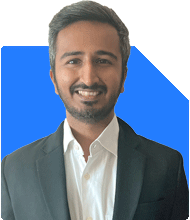Vivek Lala |323 Answers |Ask -Follow
Tax, MF Expert - Answered on Sep 23, 2023
Lala cleared his chartered accountancy exam in 2018 and completed his articleship with Chaturvedi and Shah. ... more

I am 41, my sip portrolio is as below: 1. Icici pru bluechip: 1000/month sip 2.hdfc midcap opportunities: 100/bz day sip 3.sbi small cap: 4000/month sip 4.hdfc small cap: 65954 lumpsum 5.parag parik flexicap: 20000 lumpsum 6.sbi focused fund: 2500/month sip 7.hsbc value fund: 2500/montb sip 8.icici equity and debt: 1000/month sip 15% increment yearly 9. Icici technology fund: 1000/month sip 15 c/o yearly increment 2 balanced fund icici baf and hdfc baf 50000 rs lumpsum each Risk appetite: high, investment horizon; 20 years Goal: accumulate max amount 10 cr if possible.
You should go for the following allocations :
Small cap 30% , mid cap 30% , multi cap 15% , large and mid cap 15% , thematic funds ( consumption, tech, etc ) 10%
If you want to accumulate 10crs in 20yrs your sip amount has to be Rs.101000 at the rate of 12% xirr
You may like to see similar questions and answers below
Nikunj Saraf | Answer |Ask -Follow
Mutual Funds Expert - Answered on Nov 11, 2022
Sanjeev Govila | Answer |Ask -Follow
Financial Planner - Answered on Feb 06, 2024
Ramalingam Kalirajan |10906 Answers |Ask -Follow
Mutual Funds, Financial Planning Expert - Answered on May 30, 2024
Ramalingam Kalirajan |10906 Answers |Ask -Follow
Mutual Funds, Financial Planning Expert - Answered on May 30, 2024
Milind Vadjikar | Answer |Ask -Follow
Insurance, Stocks, MF, PF Expert - Answered on Nov 19, 2024
Ramalingam Kalirajan |10906 Answers |Ask -Follow
Mutual Funds, Financial Planning Expert - Answered on Dec 19, 2025
Nayagam P P |10859 Answers |Ask -Follow
Career Counsellor - Answered on Dec 19, 2025
Ramalingam Kalirajan |10906 Answers |Ask -Follow
Mutual Funds, Financial Planning Expert - Answered on Dec 19, 2025
Ramalingam Kalirajan |10906 Answers |Ask -Follow
Mutual Funds, Financial Planning Expert - Answered on Dec 19, 2025
Ramalingam Kalirajan |10906 Answers |Ask -Follow
Mutual Funds, Financial Planning Expert - Answered on Dec 19, 2025
Radheshyam Zanwar |6751 Answers |Ask -Follow
MHT-CET, IIT-JEE, NEET-UG Expert - Answered on Dec 19, 2025
Radheshyam Zanwar |6751 Answers |Ask -Follow
MHT-CET, IIT-JEE, NEET-UG Expert - Answered on Dec 19, 2025
Samraat Jadhav |2514 Answers |Ask -Follow
Stock Market Expert - Answered on Dec 18, 2025
Reetika Sharma |432 Answers |Ask -Follow
Financial Planner, MF and Insurance Expert - Answered on Dec 18, 2025
Reetika Sharma |432 Answers |Ask -Follow
Financial Planner, MF and Insurance Expert - Answered on Dec 18, 2025




























